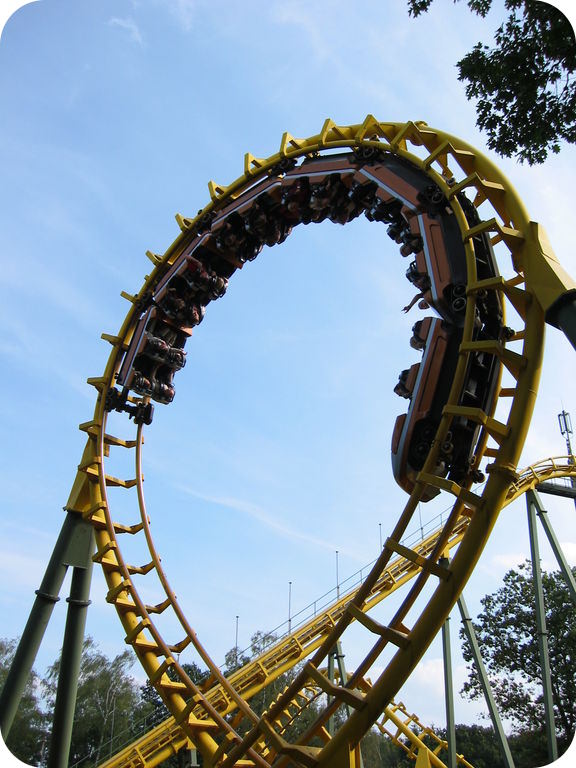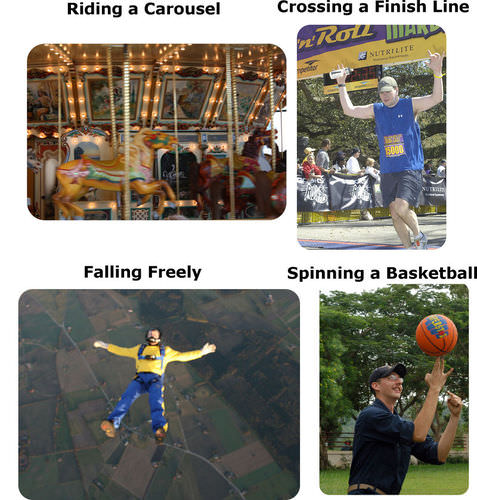READ: Acceleration
READ: Acceleration
Imagine the thrill of riding on a roller coaster like this one! The coaster slowly crawls to the top of the track and then flies down the other side. It also zooms around twists and turns at breakneck speeds. These changes in speed and direction are what make a roller coaster ride so exciting. Changes in speed or direction are called acceleration.
Defining Acceleration
Acceleration is a measure of the change in velocity of a moving object. It measures the rate at which velocity changes. Velocity, in turn, is a measure of the speed and direction of motion, so a change in velocity may reflect a change in speed, a change in direction, or both. Both velocity and acceleration are vectors. A vector is any measurement that has both size and direction. People commonly think of acceleration as in increase in speed, but a decrease in speed is also acceleration. In this case, acceleration is negative and called deceleration. A change in direction without a change in speed is acceleration as well.
Q: Can you think of an example of acceleration that doesn’t involve a change in speed?
A: Driving at a constant speed around a bend in a road is one example. Use your imagination to think of others.
Examples of Acceleration
You can see several examples of acceleration in the pictures from the Figure below. In each example, velocity is changing but in different ways. For example, direction may be changing but not speed, or vice versa. Figure out what is moving and how it’s moving in each of the photos.
Q: Describe how velocity is changing in each of the motions you identified from the Figure above.
A: You should describe how both direction and speed are changing. For example, the boy on the carousel is moving up and down and around in a circle, so his direction is constantly changing, but his speed changes only at the beginning and end of the ride. The skydiver is falling straight down toward the ground so her direction isn’t changing, but her speed keeps increasing as she falls until she opens her parachute.
Feeling Acceleration
If you are accelerating, you may be able to feel the change in velocity. This is true whether the change is in speed, direction, or both. You often feel acceleration when you ride in a car. As the car speeds up, you feel as though you are being pressed against the seat. When the car slows down, you feel like you are being pushed forward, especially if the change in speed is sudden. If the car changes direction and turns right, you feel as though you are being pushed to the left. With a left turn, you feel a push to the right. The next time you ride in a car, notice how it feels as the car accelerates in each of these ways.
Summary
- Acceleration is a measure of the change in velocity of a moving object. It measures the rate at which the change is occurring. It may reflect a change in speed, a change in direction, or both. Like velocity, acceleration is a vector.
- Examples of acceleration include a person riding a carousel and a skydiver in free fall.
- When you experience acceleration, you may be able to feel the changes in speed and/or direction.

